Catalytic hydrogenation involves addition of hydrogen to a C=Cor−C≡C− bond in presence of a metal catalyst such as Ni, Pt, Pd, etc. These are called heterogeneous catalysts. Both H2 and alkene/alkyne get adsorbed on the surface of the metal , and syn-addition of hydrogen atoms takes place. The relative rates of hydrogenation follows the order:
−C≡C−>C=C>C=O>C6H6
If sodium or lithium in liquid ammonia is used, anti-addition of H-atoms occurs across −C≡C−bond. These reducing agents can also be used to reduce double bonds of benzene rings and conjugated dienes but not of isolated dienes.
The catalytic hydrogenation of which of the following alkenes is most exothermic ?
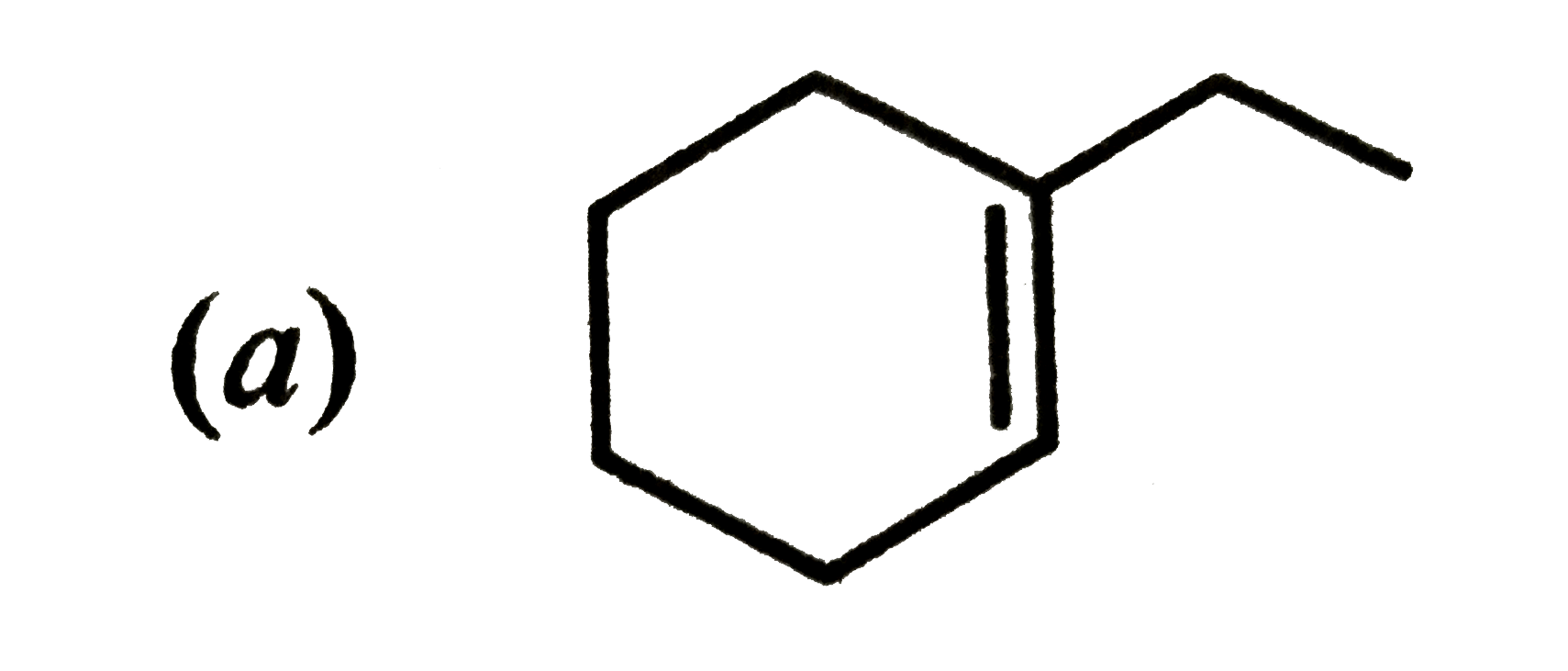
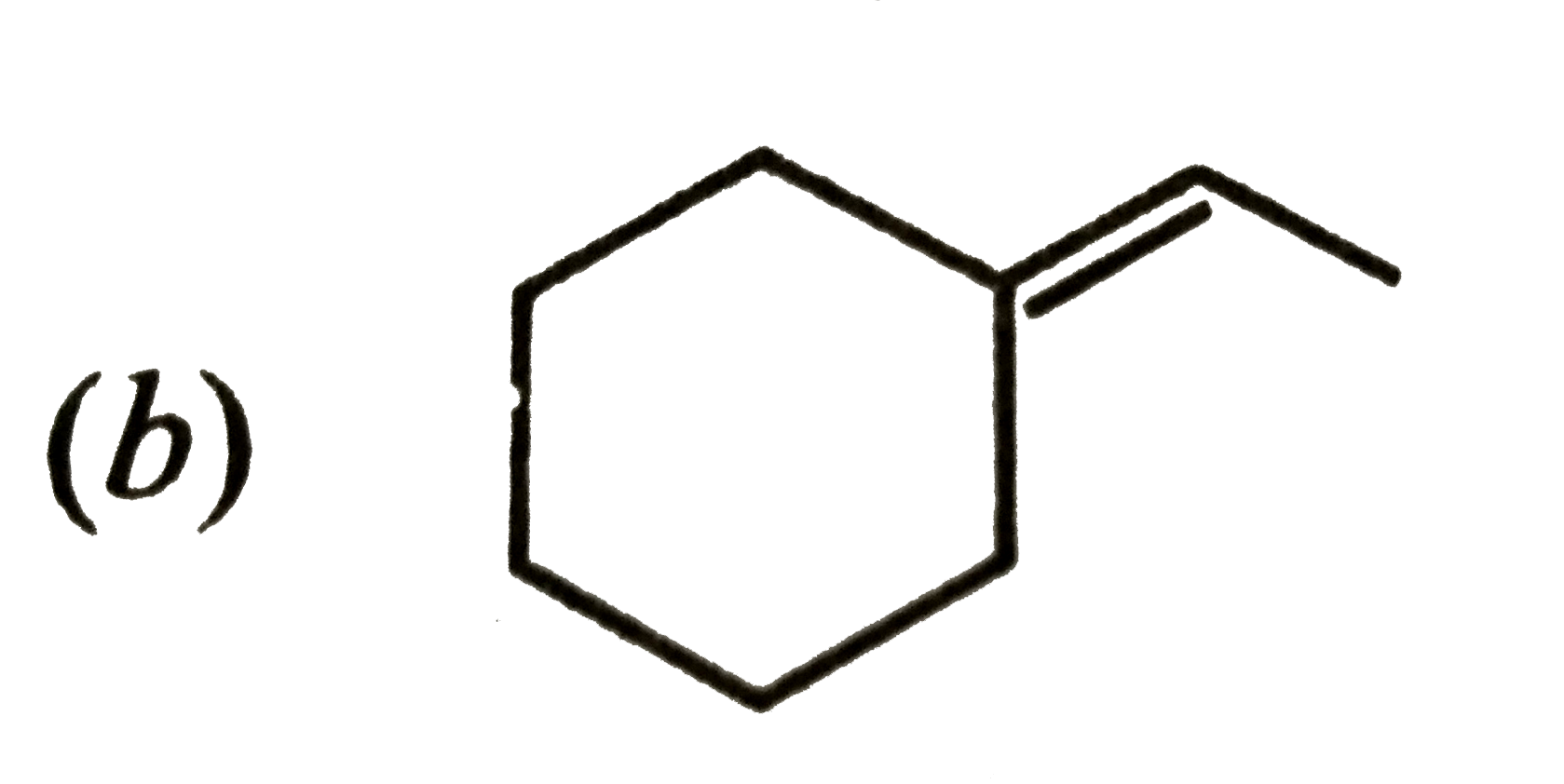
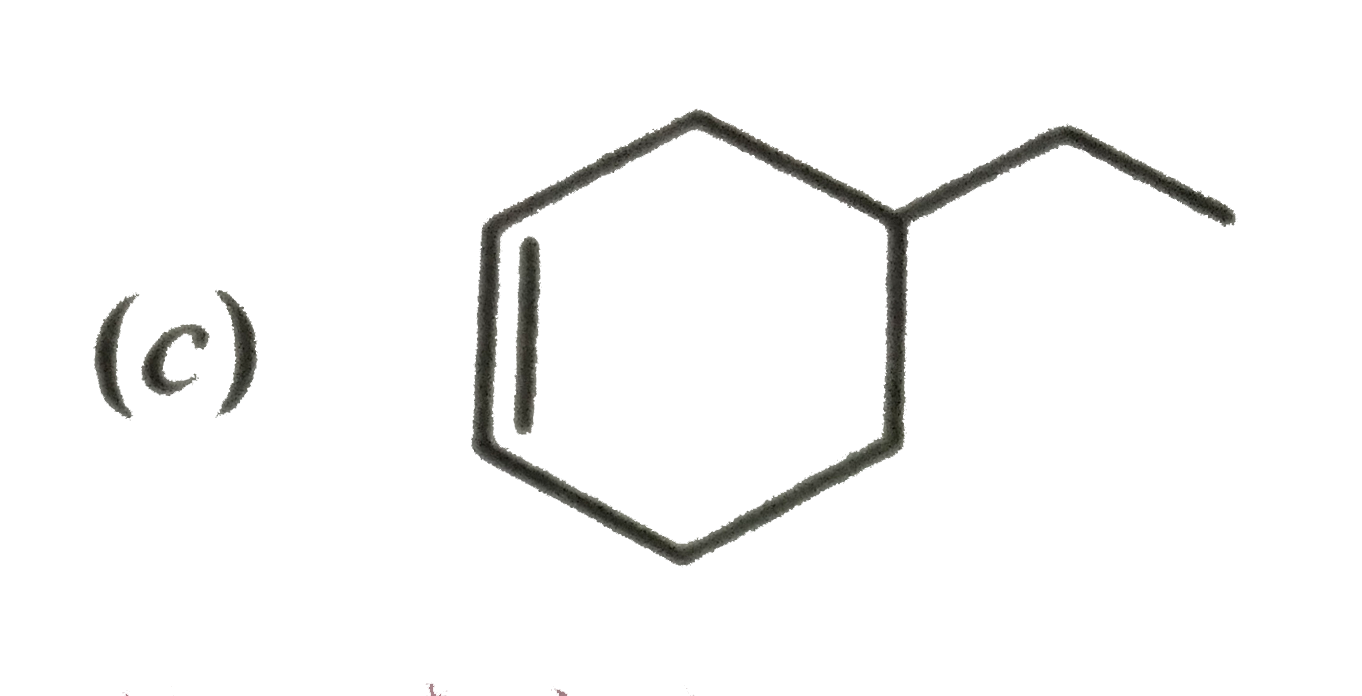
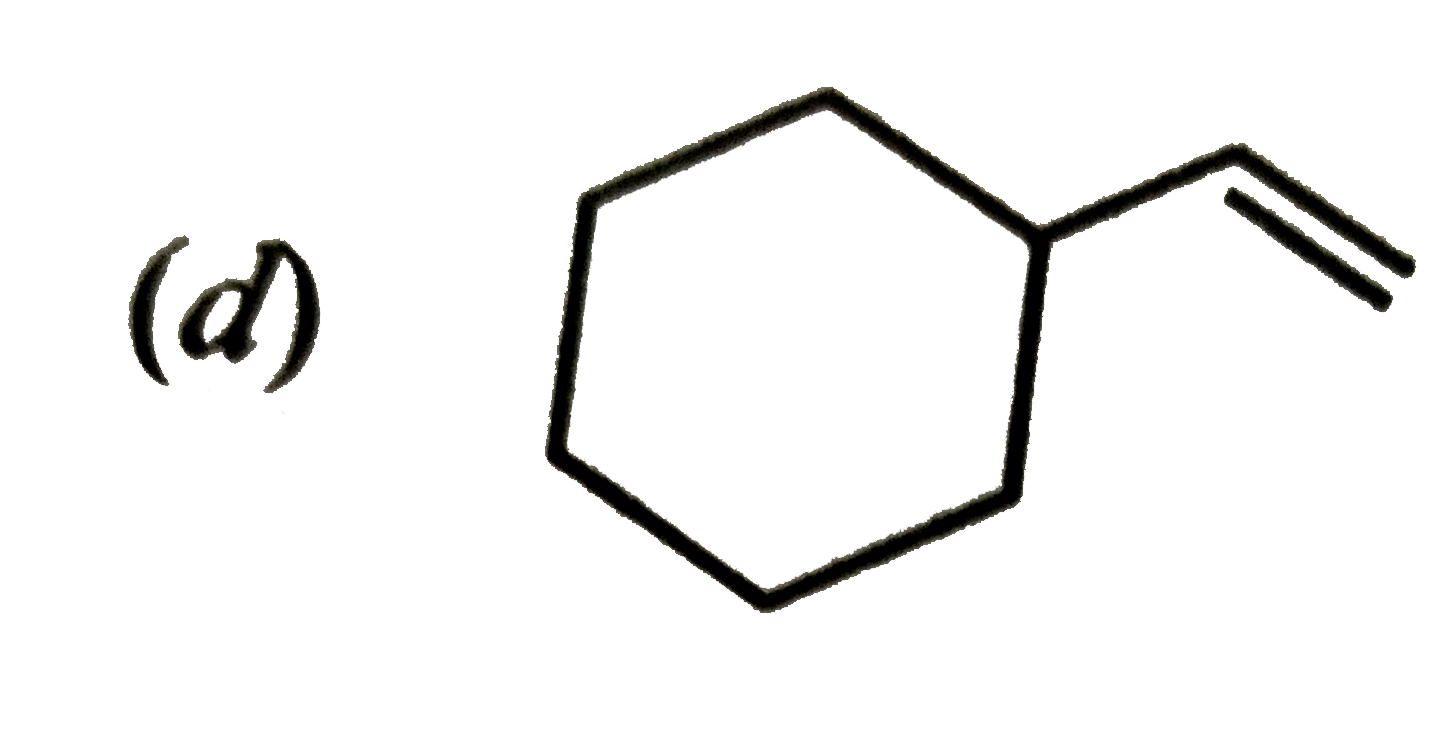
The correct Answer is:D
To determine which alkene undergoes the most exothermic catalytic hydrogenation, we need to analyze the number of alpha hydrogens (α-H) present in each alkene structure. The heat of hydrogenation is inversely related to the number of α-H atoms; the fewer α-H atoms there are, the more exothermic the reaction will be.
1. Identify the Structures of Alkenes:
We need to look at the given options (A, B, C, D) and identify the structure of each alkene.
2. Count the Alpha Hydrogens:
For each alkene, we will count the number of α-H atoms. The α-H atoms are the hydrogens attached to the carbon atoms that are directly involved in the double bond.
- Option A:
- Structure: R1C=C(R2)
- Count: 2 α-H from one carbon and 2 α-H from the other carbon = 4 α-H total.
- Option B:
- Structure: R1C=C(R2)
- Count: 3 α-H from one carbon and 2 α-H from the other carbon = 5 α-H total.
- Option C:
- Structure: R1C=C(R2)
- Count: 2 α-H from one carbon and 2 α-H from the other carbon = 4 α-H total.
- Option D:
- Structure: R1C=C(R2)
- Count: 1 α-H from one carbon and 0 α-H from the other carbon = 1 α-H total.
3. Determine the Exothermicity:
The alkene with the least number of α-H atoms will have the most exothermic hydrogenation.
- Option A: 4 α-H
- Option B: 5 α-H
- Option C: 4 α-H
- Option D: 1 α-H
4. Conclusion:
Since Option D has the least number of α-H atoms (1 α-H), it will have the most exothermic hydrogenation.
Final Answer:
The catalytic hydrogenation of the alkene in Option D is the most exothermic.
---
We need to look at the given options (A, B, C, D) and identify the structure of each alkene.
For each alkene, we will count the number of α-H atoms. The α-H atoms are the hydrogens attached to the carbon atoms that are directly involved in the double bond.
- Structure: R1C=C(R2)
- Count: 2 α-H from one carbon and 2 α-H from the other carbon = 4 α-H total.
- Option B:
- Structure: R1C=C(R2)
- Count: 3 α-H from one carbon and 2 α-H from the other carbon = 5 α-H total.
- Option C:
- Structure: R1C=C(R2)
- Count: 2 α-H from one carbon and 2 α-H from the other carbon = 4 α-H total.
- Option D:
- Structure: R1C=C(R2)
- Count: 1 α-H from one carbon and 0 α-H from the other carbon = 1 α-H total.
The alkene with the least number of α-H atoms will have the most exothermic hydrogenation.
- Option B: 5 α-H
- Option C: 4 α-H
- Option D: 1 α-H
Since Option D has the least number of α-H atoms (1 α-H), it will have the most exothermic hydrogenation.
The catalytic hydrogenation of the alkene in Option D is the most exothermic.
Topper's Solved these Questions
- BOOK - PRADEEPCHAPTER - HYDROCARBONSEXERCISE - Competition Focus (JEE(main and advanced)/Medical Entrance) IV. MATCHING TYPE QUESTIONS3videos
HYDROCARBONS
- BOOK - PRADEEPCHAPTER - HYDROCARBONSEXERCISE - Competition Focus (JEE(main and advanced)/Medical Entrance) V. MATRIX-MATCH TYPE QUESTIONS1videos
HYDROCARBONS
- BOOK - PRADEEPCHAPTER - HYDROCARBONSEXERCISE - Competition Focus (JEE(main and advanced)/Medical Entrance) II. MULTIPLE CHOICE14videos
HYDROCARBONS
- BOOK - PRADEEPCHAPTER - EQUILIBRIUM IN PHYSICAL AND CHEMICAL PROCESSESEXERCISE - Competition Focus (Jee(Main and advanced)/Medical Entrance) VIII. ASSERTION - REASON TYPE QUESTIONS (TYPE - II)10videos
EQUILIBRIUM IN PHYSICAL AND CHEMICAL PROCESSES
- BOOK - PRADEEPCHAPTER - HYDROGEN EXERCISE - COMPETITION FOCUS (Assertion-Reason Type Questions) Type 215videos
HYDROGEN
Similar Questions
Reduction of CH3CH2NC with hydrogen in presence of Ni or Pt as catalyst gives
View SolutionCatalytic hydrogenation involves addition of hydrogen to a C=Cor−C≡C−bond in presence of a metal catalyst such as Ni, Pt, Pd, etc. These are called heterogeneous catalysts. Both H2 and alkene/alkyne get adsorbed on the surface of the metal , and syn-addition of hydrogen atoms takes place. The relative rates of hydrogenation follows the order:
−C≡C−>>C=C<>C=o<C6H6
If sodium or lithium in liquid ammonia is used, anti-addition of H-atoms occurs across −C≡C−bond. These reducing agents can also be used to reduce double bonds of benzene rings and conjugated dienes but not of isolated dienes.
[A]Lindlar's←−−−−CatalystCH3−C≡C−CH3 Na in−−−−→liq.NH3[B]
[A] and [ B] are respectivelyView Solution
Knowledge Check
- Question 1 - Select One
Catalytic hydrogenation involves addition of hydrogen to a C=Cor−C≡C− bond in presence of a metal catalyst such as Ni, Pt, Pd, etc. These are called heterogeneous catalysts. Both H2 and alkene/alkyne get adsorbed on the surface of the metal , and syn-addition of hydrogen atoms takes place. The relative rates of hydrogenation follows the order:
−C≡C−>C=C>C=O>C6H6
If sodium or lithium in liquid ammonia is used, anti-addition of H-atoms occurs across −C≡C−bond. These reducing agents can also be used to reduce double bonds of benzene rings and conjugated dienes but not of isolated dienes.
The catalytic hydrogenation of which of the following alkenes is most exothermic ?A B
B C
C D
D
- Question 2 - Select One
Catalytic hydrogenation involves addition of hydrogen to a gt C = Clt or -C ≡ C- bond in presence of a metal catalyst such as Ni, Pt, Pd, etc. These are called heterogeneous catalysts. Both H2 and alkene/alkyne get adsorbed on the surface of the metal , and syn-addition of hydrogen atoms takes place. The relative rates of hydrogenation follows the order:
−C≡C−>>C=C<>C=o<C6H6
If sodium or lithium in liquid ammonia is used, anti-addition of H-atoms occurs across −C≡C−bond. These reducing agents can also be used to reduce double bonds of benzene rings and conjugated dienes but not of isolated dienes.
Which of the following alkenes will react most readily with H2 under catalytic hydrogeneration conditions ?A B
B C
C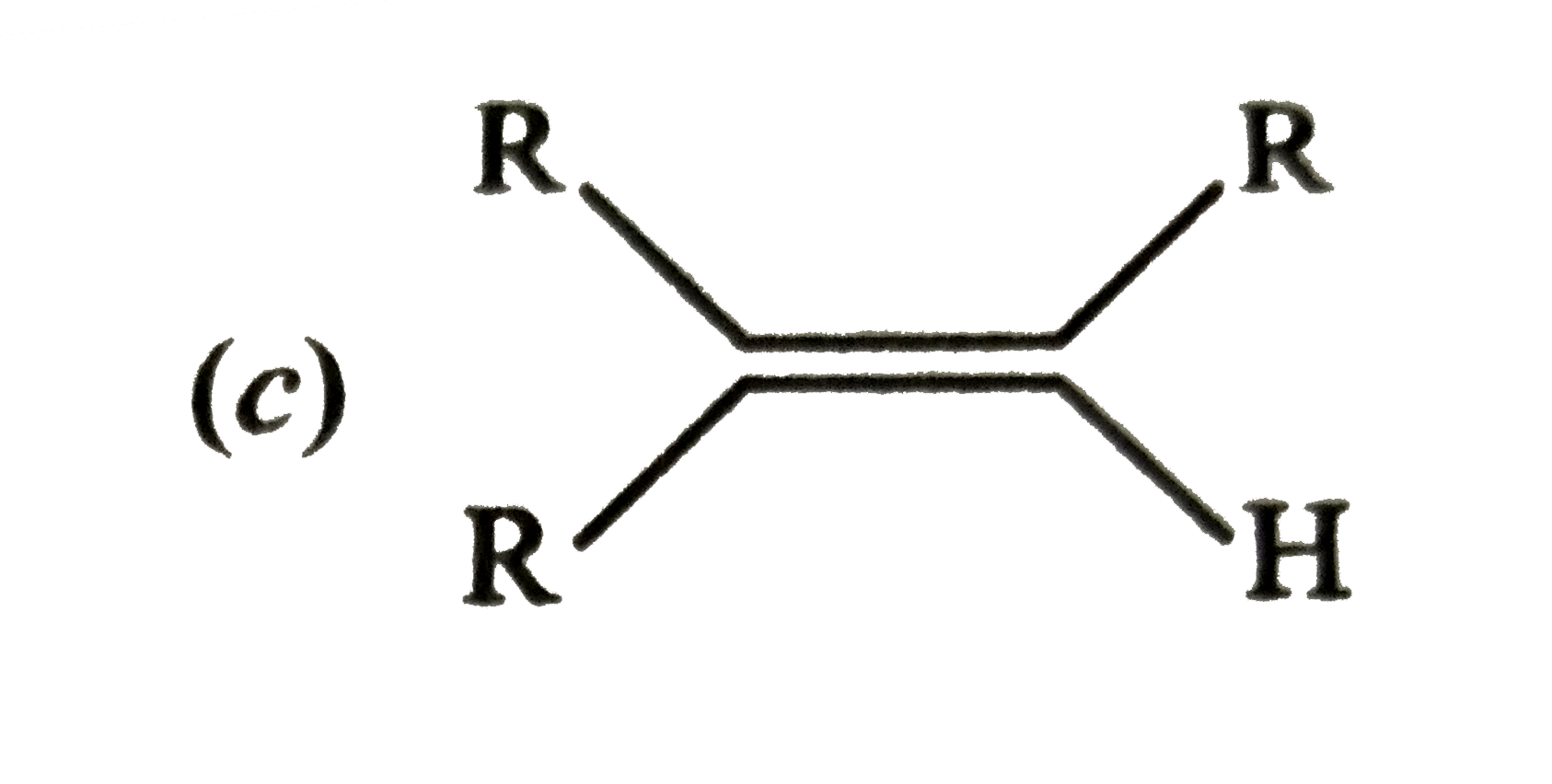 D
D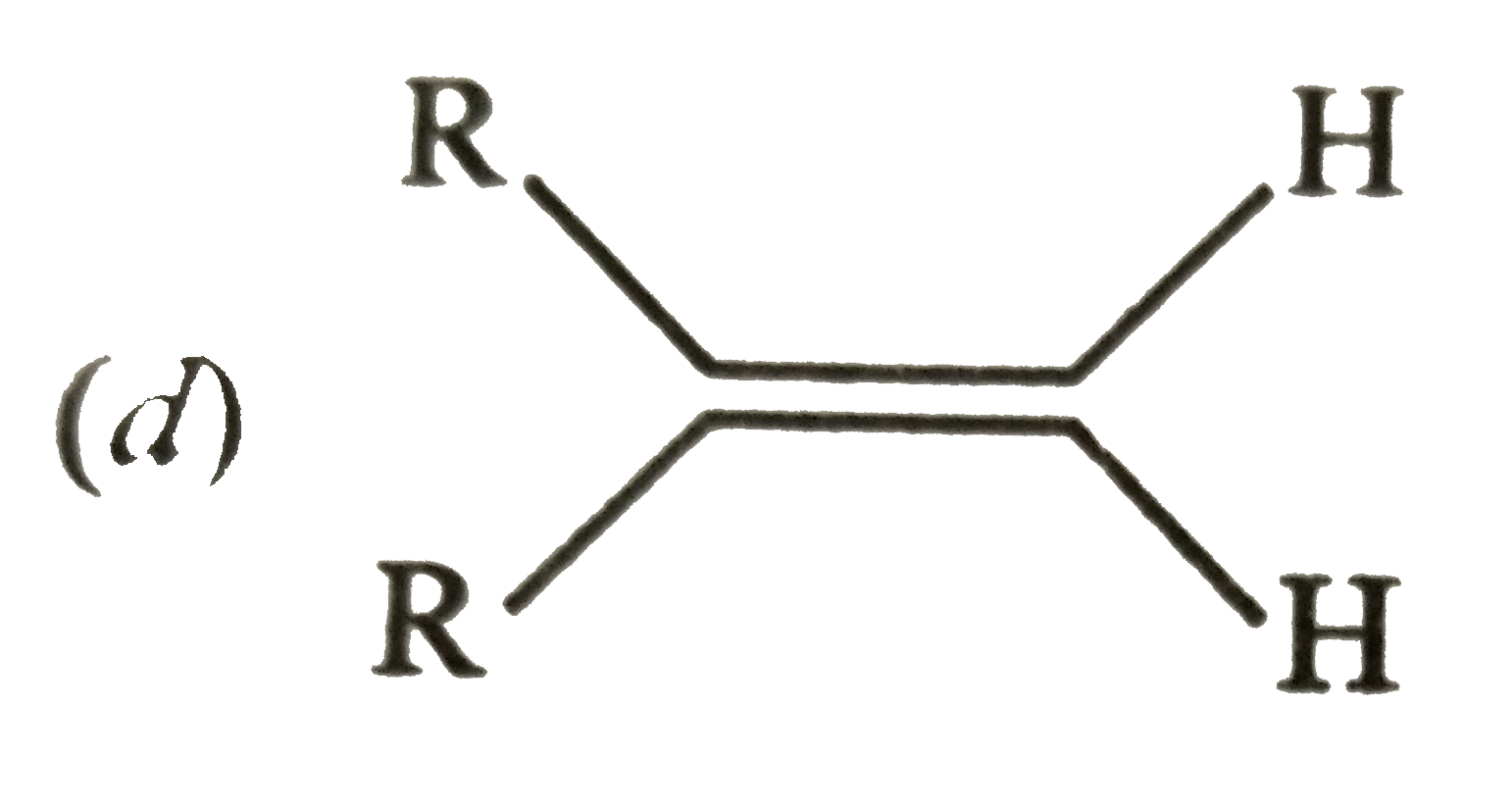
- Question 3 - Select One
Catalytic hydrogenation involves addition of hydrogen to a gt C = Clt or -C ≡ C- bond in presence of a metal catalyst such as Ni, Pt, Pd, etc. These are called heterogeneous catalysts. Both H2 and alkene/alkyne get adsorbed on the surface of the metal , and syn-addition of hydrogen atoms takes place. The relative rates of hydrogenation follows the order:
−C≡C−>>C=C<>C=o<C6H6
If sodium or lithium in liquid ammonia is used, anti-addition of H-atoms occurs across −C≡C−bond. These reducing agents can also be used to reduce double bonds of benzene rings and conjugated dienes but not of isolated dienes.
Which of the following functional groups is most easily reduced.Agt C=OBgt C =C ltC−C≡C−DC6H6
The relative rate of catalytic hydrogenation of the following alkenes is :
 View Solution
View SolutionAddition of hydrogen to alkene in presence of nickel catalyst is
View SolutionDihydrogen gas adds to alkenes and alkynes in the presence of finely divided catalysts like Pt,Pd,orNi to form alkanes. This process is called
View SolutionPhenol on hydrogenation in the presence of nickel catalyst at 160∘C gives
View Solution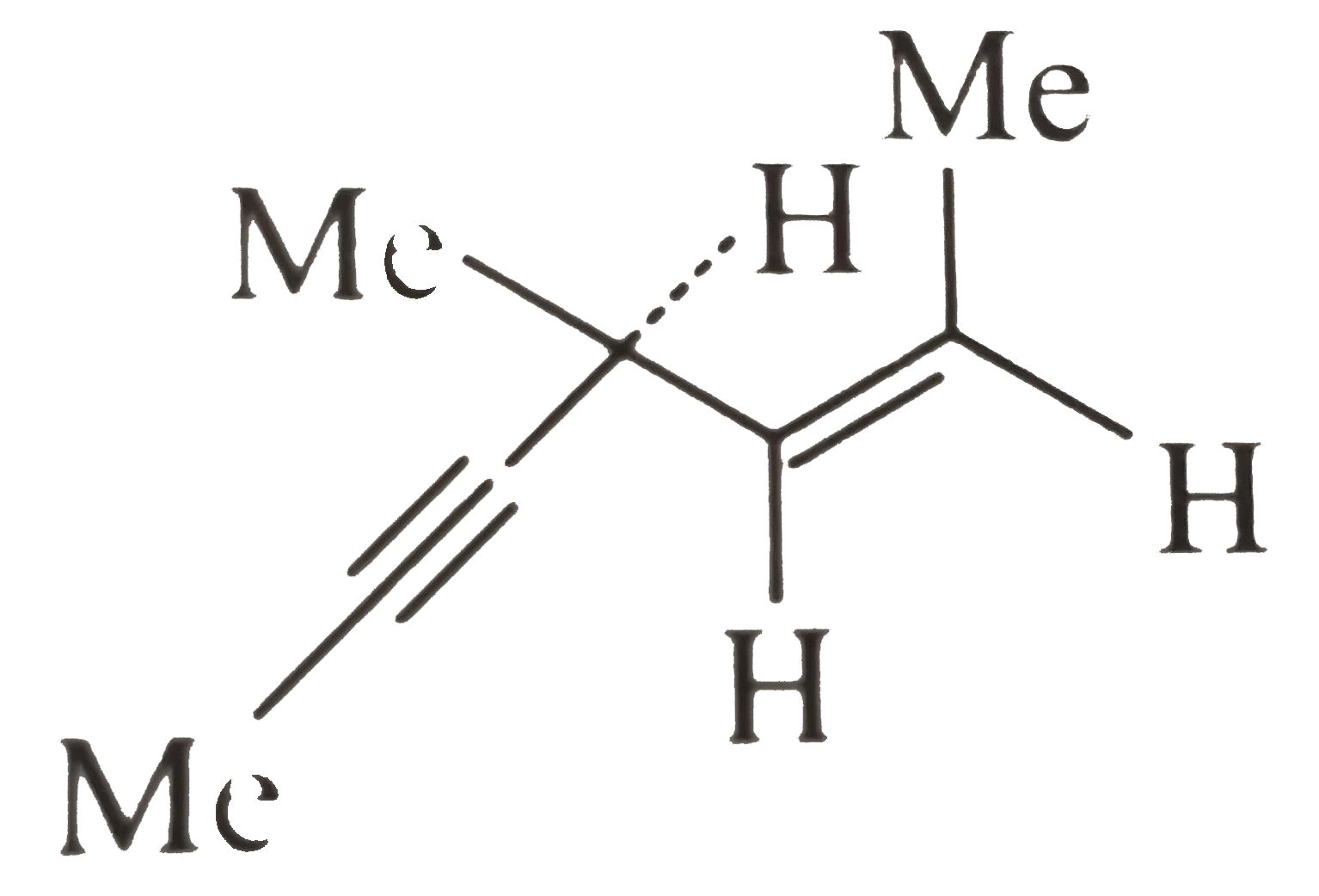
Hydrogenation of the above compound in the presence of poisoned Pd catalyst gives:View Solution

